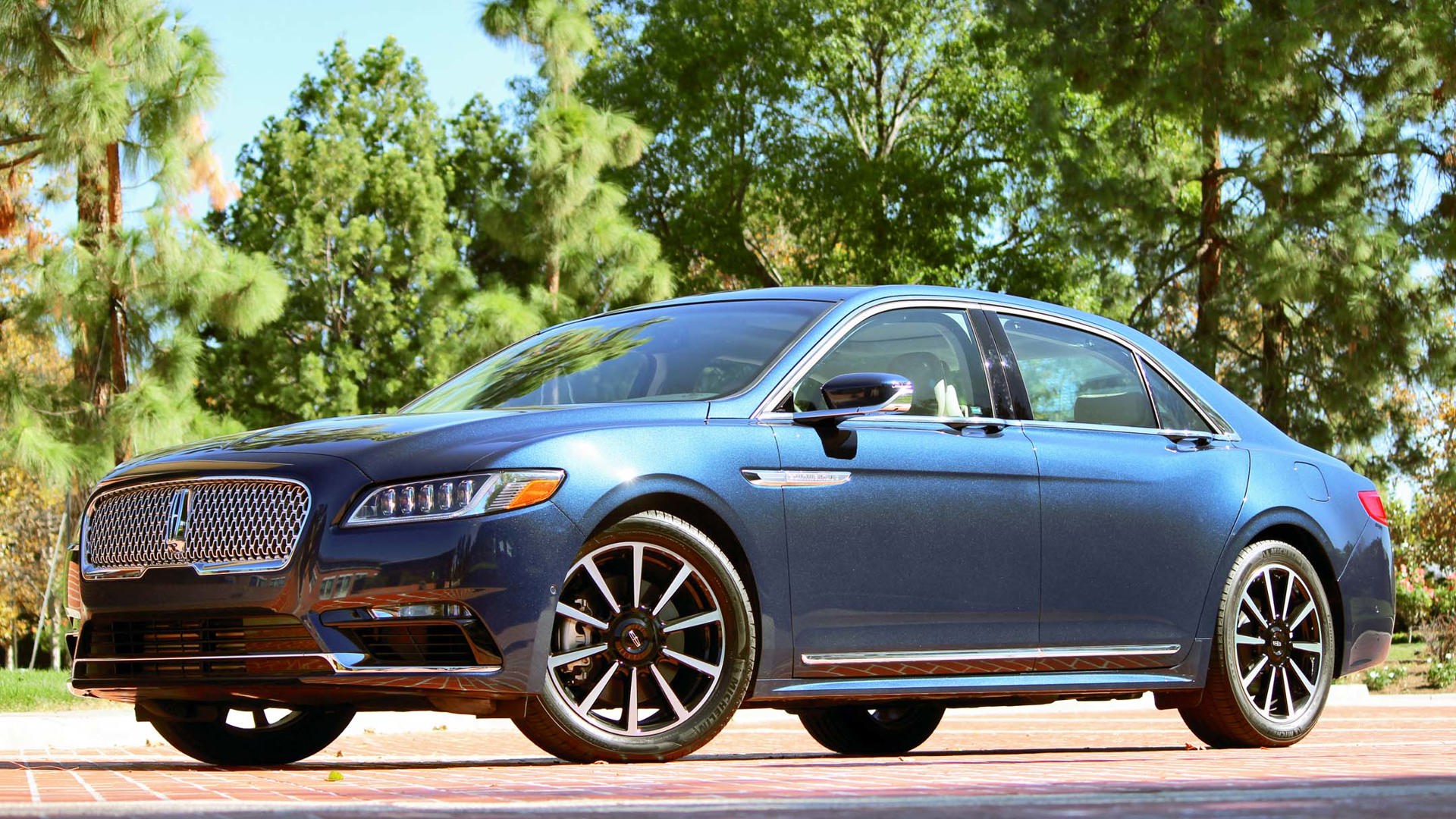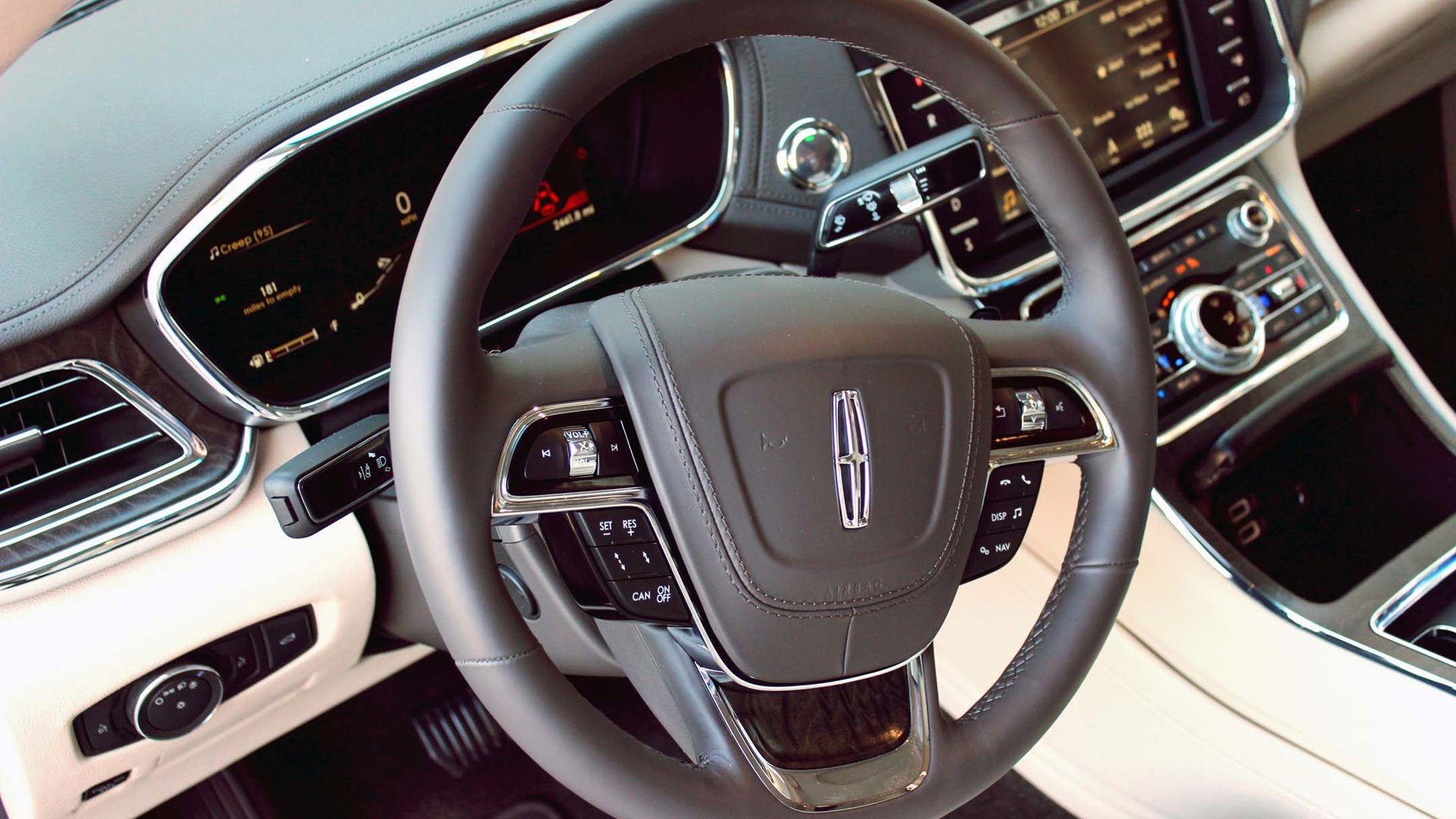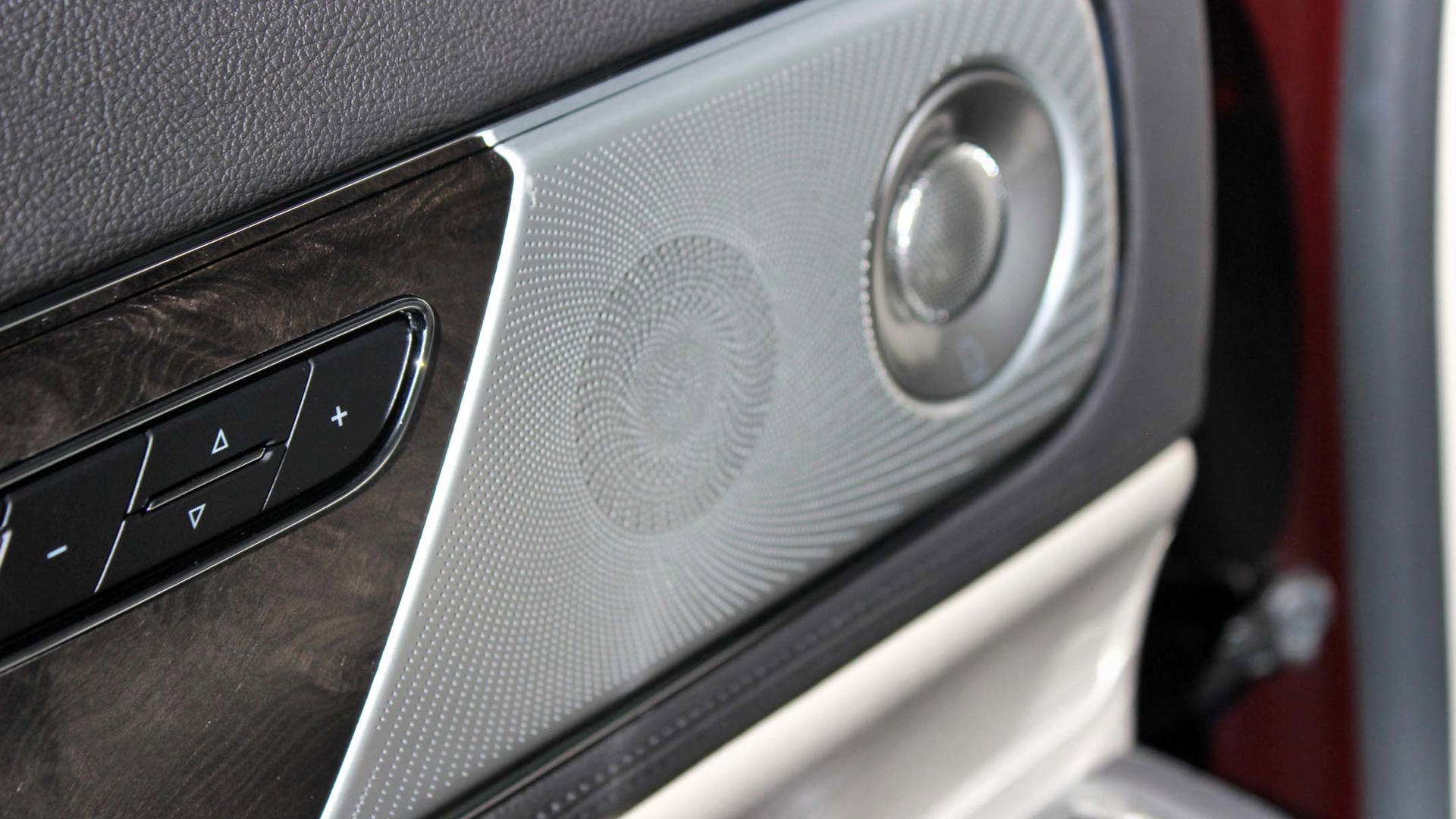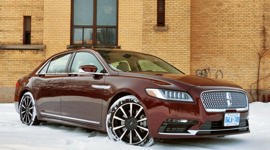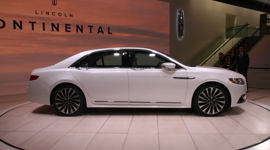I would say that it’s appropriate that I’m writing this from room 360 of the Bel-Air hotel in Los Angeles. We’re a week away from the U.S. Presidential Election and a quick chat with the wonderfully informative bellboy upon check-in revealed that it was in this very room – perhaps at this very desk – that President Richard Nixon wrote some of his memoirs.
Talk to Lincoln, and they’ll tell you that this car was a work of passion as much as any Lincoln that has come before it.
It’s appropriate not because I’m thinking of shamefully stepping down as an auto journalist in the face of being discovered at the centre of a mass conspiracy. It’s appropriate because the Bel-Air is being used as a staging area to launch the all-new 2017 Lincoln Continental, the car that so famously transported a number of US presidents from conference to conference and hotel to hotel, including Tricky Dick himself, in the ’60s and ’70s. Heck, for all I know, his own Conti was parked out front as he wrote.
Either way, the 2017 model year marks the first time the Continental name has appeared on a Lincoln since 2002, at which point the Continental had become a shadow of its former self, all front-wheel-drive-y and mid-sized and lumpy.
Not so anymore; especially in the Canadian market, where the FWD Conti is a thing of the past. Don’t get too excited though, all you RWD lovers out there; because this is Canada, and because the buying public loves AWD, that’s all we’re going to get, from the basic $57,000 Select model, up through the $60,500 Continental Reserve trim and the $63,500 Continental Reserve w/3.5L EcoBoost (other models get a 2.7L). The US gets a front-driver, of which I’m sure they’ll sell about 10. Maybe 20.
Don’t think that has softened this particular Continental, though. Talk to Lincoln, and they’ll tell you that this car was a work of passion as much as any Lincoln that has come before it. Director of Product Development Scott Tobin remembers fondly the day they found out what the codenamed project he and his team had been working on was going to be called.
“When (Ford CEO Mark Fields) and (current CEO and Chairman of Ford Europe Jim Farley) walked in and said the project we were working on was going to be the new Continental, the awesomeness was monumental,” he said. “We were bringing back an iconic nameplate.” It was time to end a string of mediocre Lincoln “flagship” sedans, a spot most recently occupied by the utterly forgettable – and done after 2016 – Ford-Taurus-in-Drag MKS.
Of course, with a nameplate as iconic as “Continental”, the car has to have style. Just think of how much presence the classic Contis had, whether transporting heads of state or the cast of the popular HBO bro show, Entourage.
Big grilles, low, wide stance, long – these are the necessary details, and the ’17 car was going to get them, in one way or another.
In the length department, its 5,116 mm overall length is longer than either the Mercedes-Benz E-Class, Lexus GS or BMW 5 Series, and it’s wider than all three, too. That’s an indication of how Lincoln is positioning the Continental to be a kind of go-between between the mid-size and full-size luxury segments; indeed, when one of your main market targets is chauffeur-centric China, you need to make your car big but affordable, too. And, since there are no plans for a long-wheelbase version at this time, this model has to cover a lot of bases.
The result, then, is a car that fulfills those requirements we spoke about earlier. Sure, when seen from dead-on the Continental does remind, a little, of the down-the-line MKZ (down to the Lincoln star-shaped grille inserts), but as soon as you swivel right or left, the Conti’s true colours come sharply into focus. The stance is just right: just enough room between the front and rear wheels to highlight the interior space (1,049 mm of rear legroom, 1,128 mm up front) without seeming awkwardly stretched. The chrome striping at base of the doors is a nice touch, too, as are the LED foglights and optional LED headlights, though those do remind of the items found on many Acuras. I wouldn’t say it’s terribly exciting, but Lincoln will tell you that their modus operandi is all about “Quiet Luxury”, and the styling from this view reflects that. Too bad we don’t get the fantastic 20-inch spiral-spoke alloys they get in the US; they’re part of the Black Label trim, which we won’t be getting here, for now at least.
From the rear, there’s actually a little more going on with the styling: the signature full-length taillight lens comes as standard, as does a pair of exhaust outlets that sit fairly predominantly in plain view. Some luxury manufacturers may try and hide these, but Lincoln’s put them in plain view as if to say, “There’s more car under here than you may think.”
The interior sure does back that up, especially if you select the rear-seat package, which turns the flip-down armrest into a fully functional console with climate, infotainment and some of the seat controls (those for the massage function are mounted on the upper door). There’s even an LCD display there that shows the song you’re listening to, your fan speed and so forth.
In the legroom department, the figures don’t lie: there’s tons back here, whether you’re sat behind the driver or front passenger (whose seat, as it happens, you can adjust from the back seat). The tilting rear seatback (another feature of the package) is a bonus, too.
Actually, that’s not quite correct. If you’re tall (I’m 6'3"), and you have spec’ed the optional full-length moonroof, then the tilting seatback moves from “bonus” to “necessity” – the rear headroom you’re left with means you have to tilt that seat back to avoid messing with your hairdo. Removing the mooroof helps, but then you’re, well, removing the moonroof, which is big and makes for a lighter, airier cabin. The seat massagers are good, though: you can adjust the intensity to two levels by pressing the button on the door. It’s great, and it works perfectly. Or, you can just shut it off and rest, using the airplane-like headrests as a pillow.
The front seats are almost on-par with the rears when it comes to features: they can be heated and cooled and offer a massage function of their own. You lose the special headrests but you get an optional ($750) dual-adjustable seatback instead, making for seats that are adjustable 30 ways. They are some properly comfortable chairs that make for a nice seating position.
The rest of the features up front are also well carried-out; the standard digital gauge cluster can be modified to display all manner of information, from a traditional tach and speedo layout to something a little more contemporary, the centre stack eschews the all-touch setup of Lincolns past for a well-laid-out button and knob set, topped by an 8-inch colour display and SYNC3 infotainment. Thanks to clear graphics, big buttons and a smart interface, SYNC3 has risen to the top of the echelon when it comes to in-car infotainment in the segment. Apple CarPlay and Android Auto are supported, and you can easily switch between those interfaces and the standard SYNC3 menus. I like that.
I also like – really like – the Revel sound system. It brings 19 speakers to the party, but that’s only the start of the story. Lincoln was so serious about getting the sound in the Continental as close to concert quality as possible that Revel’s engineers worked alongside Lincoln’s “from the blueprint on,” according to Mark Glazer, Principal Engineer of Revel Home Systems.
That meant strategic placement of the speakers in the car, the use of quality materials like actual metal speaker grilles and the software engineering required to make it sound as real as possible, and which allowed for three audio modes: Traditional Stereo, On Stage (so you feel like you’re actually up there with the artist; it works) and Audience (so you feel like you’re actually in the jazz club; it works, too), as well as the ability to restore sat radio and MP3 music files to near their original glory. It sounds fantastic, as if you’ve put on your favourite pair of headphones. Better still, thanks to the clever sound engineering, it sounds great no matter where you’re sitting. It almost defeats the need for a balance/fader, although that option still exists, of course. You will need to part with an additional $1,250 if you want all that aural goodness, however, which is a small price to pay for all that quality.
The display screen is flanked on either side by button sets; the right-hand side features controls for your park assist (auto park and park out in either perpendicular or parallel fashion is an option), camera (top-down view and various rear camera views, depending on spec) and auto hold, which eliminates creep and allows you to lift your feet off the pedals when sitting in traffic.
The left-hand side features buttons of a different stripe: those are your transmission controls, which means you don’t have to worry about a shift lever clogging up the centre console.
They control a six-speed automatic transmission – your only choice – which Lincoln insists is right for the Conti, even though much of its competition are going to seven-, eight- and nine-speed transmissions, as it’s been specifically tuned to work with either the 2.7L EcoBoost turbo 6 (330 hp, 380 lb-ft), or the 3.5 L twin-turbo V6 (400 hp, 400 lb-ft). Wheel-mounted paddles allow you to the shifting on your own, and they’re responsive.
In fact, I tend to agree with Lincoln: on both the highway and on twisty sideroads, I never felt I needed an extra gear, nor did the transmission spend time constantly searching for the right gear, as is often the case with those other gearboxes. Still, customers are going to be wondering about the decision, so Lincoln’s really going to have make sure they get people testing the Conti to see what they – and we – are on about.
Power-wise, while there will be two available engines as we mentioned, we only had a chance to sample the 3.5L Ecoboost V6. That’s too bad, as the 2.7 is an efficient gem of an engine that works well in the F-150 pickup, so I imagine it would be a great fit for the lighter Continental.
Then again, while “Quiet Comfort” was one of the themes of the event, so was “Effortless Power”, and it doesn’t get much more effortless than this.
Power comes on strong: peak horsepower is reached at 5,750 rpm, but all 400 lb-ft is available at a low 2,750. That’s where the “effortlessness” comes in; low revs mean less vibration and hardly any noise from the engine (which was so quiet on idle that my drive partner didn’t even know it was on; luckily he wasn’t in the driver’s seat at the time). That being said, when you start to venture deeper into the throttle, a rather pleasing growl can be heard through the twin tailpipes, indicating just how much power you have underfoot.
If steadily rolling along over long distances or in town is more your cup of tea – and I’ll bet that for most Conti owners, it will be – then you’re covered there, too. For starters, there’s both an S and D button for the transmission, with S making for heavier steering, a more responsive throttle and firmer damper settings.
D softens everything up, and while I thought that there was little chance the two settings would feel that different here, the difference between the two settings is actually a marked one. The most noticeable effect is how you’ll feel much more body roll in D than you would in S. The sharper turn-in is hard to miss, too.
Easier to miss is the lane-keep assist system. It comes as part of a $3,000 option package that also includes that 360-degree camera we talked about, adaptive cruise, active park assist and pre-collision assist, as well as a few other odds ’n’ ends.
Thing is, we only sort of got it to work. How quick it is to step in is adjustable to two levels (or it can be shut off entirely), and on the higher of two levels, it was OK. The lower of two levels requires a little more to step in, and we found that it just wasn’t as good at keeping its lane – especially in even modest turns – as similar systems from Infiniti or Acura. The adaptive cruise control is another story; it’s smooth in its operation and can take you all the way down to 0 km/h, requiring only a tap of the throttle to get it back up to speed. It’s great for the stop ’n’ go.
So, you have the tech. You have the styling. You have the power, and you have that sound system. Does this – will this – latest Continental have what it takes to do justice to the name? To compete with the established players, who have been steadily improving their product in the 14 years since the last Conti kicked the bucket? To put the Lincoln brand back on the luxury sedan map and, most importantly, into the mind of buyers?
On the one hand, you have a great-looking, surprisingly dynamic and luxuriously appointed mid-full-sized luxury sedan with a well-known model nameplate delivered by a passionate team of engineers and designers. On the other, though, there are the shortcomings: the iffy implementation of safety tech, back seats that we wouldn’t call “cramped” if this were a mid-sized family sedan but are tight compared to the competition and a brand nameplate that, lately, has become associated mainly with its crossovers. Let’s just say that I don’t see the President – whomever that happens to be by the time you read this – trying to do their best “I’m not a crook” impression (how pertinent is that comment right about now?) in the back seat of this particular Lincoln. Not just yet.
Still, the Lincoln brass on-hand were insistent that in order to be a respected luxury car company, you need a proper full-size flagship sedan, and you have to get it right, regardless of what the rest of your line-up is doing on the sales front. Taken at face value and with no competition present, I would say it ticks most of the boxes. The real question will come when it’s time for us to see how it stands up when faced with the offerings from Germany, Japan and even the US.

